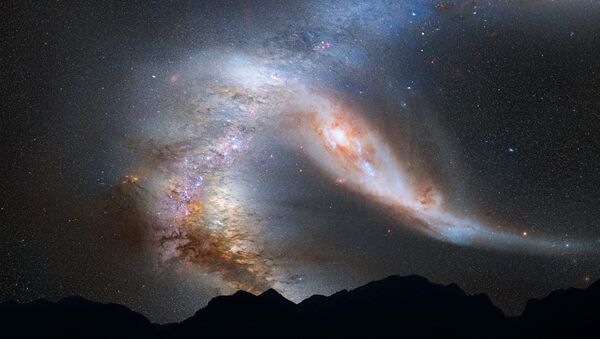They say in space, no one can hear you scream. But we can actually hear things in space, and sometimes those things we hear lie far, far away from our home planet. Every galaxy in the universe emits a radio wave signal, part of which is what we see as visible light. By mapping the signals on a monitor, we can actually see radio signals the way we see light.
And "giant" is a proper name, since one parsec equals about 3.26 light years, or 13 trillion miles. The smallest of such galaxies can include 33 copies of the Milky Way placed next to each other.
And seven new such objects have been discovered recently by Jonatan Rentería Macario of the Autonomous University of Zacatecas and Heinz Andernach of the University of Guanajuato, Phys.org reports. The astronomers analyzed imagery from Jansky Very Large Array (JVLA), located in New Mexico, US, and LOFAR, located in the Netherlands.
The largest radio galaxy, designated J1301+5105, has the projected linear size of about 8.44 million light years, which makes it one of the biggest of its kind. The largest GRG, the J1420-0545, has a length of a whopping 16 million light years.
"Our results show that current and forthcoming low-frequency surveys with excellent sensitivity to low surface brightness features have a large potential to discover significant amounts of giant radio galaxies as well as sources of complex or currently unknown types of morphologies," the authors say in their paper.
In July, astronomers from India reported discovering an impressive number of 25 giant radio galaxies.
It is truly astonishing to try to imagine such vast objects and distances. And while 25 giant radio galaxies might sound like a lot, in terms of space, it is a drop in the sea. In 2015, the Hubble telescope facilitated the discovery of more than 250 galaxies as a part of the Frontier Fields program. Albeit tiny in size, those galaxies originated some 600 to 900 million years after the Big Bang itself! They are believed to be the oldest galaxies ever discovered in space. And that is just only one cluster of galaxies, and those clusters move and even sometimes collide, causing spectacular fireworks of radio emissions, as explained by Daily Galaxy.
With so many stars in the universe, we can't help but quote the Italian-American physicist Enrico Fermi and his famous question about aliens: "Where is everybody?




